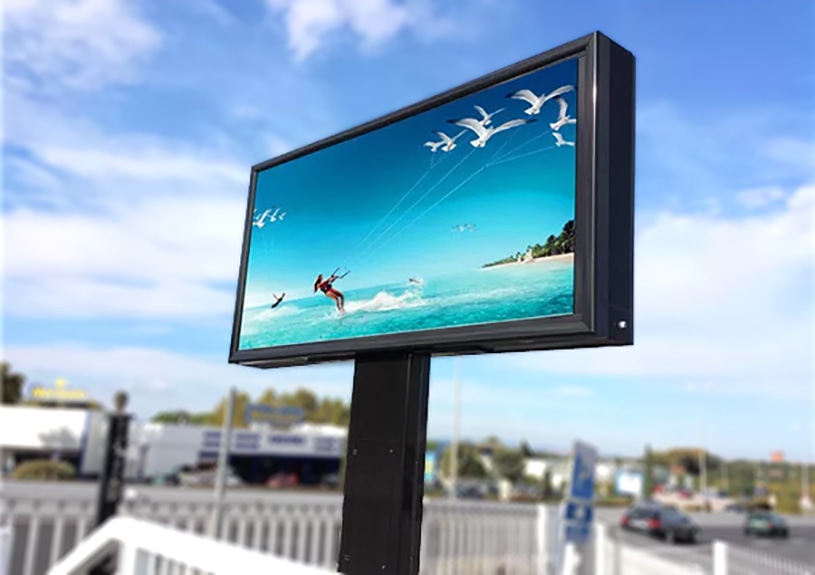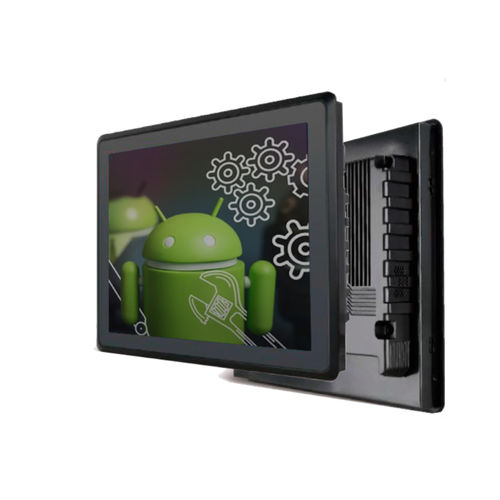
#Industry News
How to choose the best industrial high light screen?
High light displays often use specific technologies to achieve higher brightness and visibility in bright light conditions.
We often encounter visibility problems on the screens of our technological devices when intense sunlight or artificial light falls on them. This forces us to increase the brightness in order to be able to read or see the information.
This phenomenon occurs because the device needs to emit more light than there is in its surroundings to counteract the excess of luminosity.
The same happens with the screens of interactive terminals, especially when they are located outdoors or in places with a lot of ambient light.
To avoid this problem, it is important that electronic devices, whether mobile phones, computers or digital kiosks, incorporate screens designed to be readable in sunlight. At Grupo EOS Ibérica, we offer technological solutions with high-luminosity screens that guarantee the reproduction of intense and bright colours regardless of the lighting environment in which they are located.
CHARACTERISTICS OF INDUSTRIAL SCREENS
When choosing the best high light display for your company, business or interactive terminal, there are a series of considerations to take into account.
Here is a brief guide to the aspects you need to consider in order to make the best decision:
- Resistance, durability and protection: screens for industrial work environments or that are integrated in technological solutions, in addition to being high luminance, must have an IP (Ingress Protection) rating. This is an international protection standard that evaluates the resistance of an industrial component to the ingress of water and dust.
- Connectivity: make sure that the display is compatible with the devices used to control it. The most common connectivity options are HDMI, VGA, USB, Ethernet and Wifi.
- Usability: check that the display has an interface that is easy and intuitive for the user.
WHAT IS A HIGH LUMINANCE DISPLAY?
A high luminance display refers to a display that is readable in sunlight.
This type of screen has the following characteristics:
- High light intensity: the display emits a large amount of light, which produces brighter and clearer images, especially in environments with a lot of ambient light.
- Better visibility in bright light conditions: High brightness displays are perfect for situations where natural light may make it difficult to see the screen. For example, if the interactive terminal is located outdoors and in a city where sunny days predominate.
- Higher power consumption: Generating more light from the display generally requires more power. Today, however, energy management sensors make it possible to dynamically adjust the light intensity according to ambient lighting conditions. In this way, energy consumption is optimised and optimum brightness levels are maintained. In the case of interactive terminals, this ensures lower energy consumption.
TYPES OF HIGH LIGHT DISPLAYS
High-luminosity screens usually use specific technologies to achieve greater brightness and visibility in bright light conditions. Depending on the type of technology used, we can differentiate between these types of high-light displays:
1. Enhanced backlit LCD displays: these are thin, flat, liquid crystal displays made up of a number of colour or monochrome pixels placed in front of a light source or reflector. The horizontal and vertical dimensions are expressed in pixels. Hign Definition displays have a resolution from 1280 pixelsx720 pixels up to 3840x2160 pixels. Our outdoor technology solutions rely on this type of displays as they are durable, resistant and easy to read.
2. Outdoor LED screens: These screens are often used on billboards, stages, in stadiums and other outdoor spaces where high brightness is required to overcome direct sunlight or in places with bright artificial light, as they are readable from a greater distance than LCD screens.
3.High brightness OLED displays: OLED (Organic Light Emitting Diode) displays are displays with vibrant colours and wide viewing angles. They are not the brightest of displays, but high brightness variants are being developed to improve outdoor visibility.
4. MicroLED displays: MicroLED technology uses tiny individual LEDs to form pixels, enabling more precise light control and higher brightness.
5. Pantallas transflectivas: estas pantallas pueden reflejar luz ambiental para mejorar la visibilidad en exteriores sin depender únicamente de la retroiluminación. Este tipo de pantallas las suelen incorporar los relojes inteligentes ya que son más eficientes al aprovechar la luz natural.
As you can see, each type of high luminance screen has its own specific characteristics, and depending on these and its application, you will have to choose one or the other.
In any case, if you would like more information about this industrial component, do not hesitate to contact Grupo EOS Ibérica. We are specialists in industrial devices, and we will be able to advise you on the screen that best suits your needs and those of your project.







